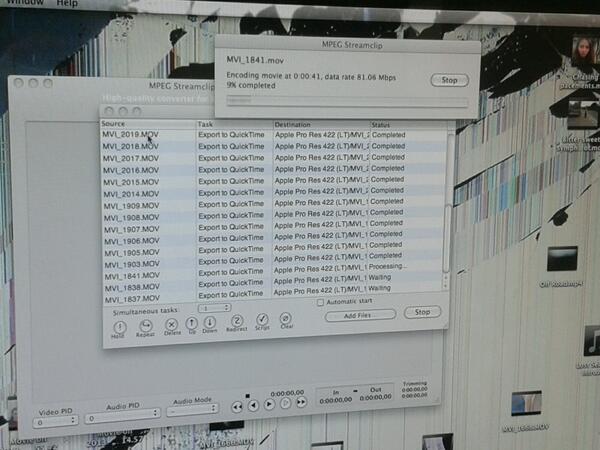There are four shot aspects that we have learnt about. These are composition, framing, depth and focus.
Framing is what the director chooses to be shown in shot and what they choose to exclude from it.
 Composition is way that the shots constituents/the way in which it is made up.
Composition is way that the shots constituents/the way in which it is made up.- The rule of thirds is a guideline which applies to the process of composing visual images. The guideline proposes that an image should be imagined as divided into nine equal parts and that important compositional elements should be placed along the separating lines or their intersections.
Depth is the space between the character/ object at the front and the back of the shot.
Focus is whether an image is sharp or soft. This allows the audience to see what they are expected to look at and what they aren't.
Once we had learnt about the four shot aspects, we did a practical lesson containing what we had learnt. The task we were set was to take the 4 still images from famous films that we were given and recreate them capturing the same depth, focus, composition and framing.
The first was a still from 'Indiana Jones- raiders of the lost ark'. As well as trying to capture the shot aspects, we also used mise-en-scene to create the same context of the image. Here is our recreation of this still image.
As you can see the focus of our still is pretty much perfect compared with the original, however there isn't as much depth between our Indiana and the idol. As well as this we could have brought the camera forwards so that we didn't capture as much of the background so that it was the same as in the original.
The next image we recreated was from 'Shaw shank redemption'. Below is the original still that we were to recreate.
As you can see the still is captured from a high angle, almost a birds eye view shot. It contains a lot of depth between the subject and background.
In our recreation of this still we didn't capture the subject at the right angle and so the depth that we needed to create we didn't. However again like before we have captured the focus on the subject like in 'Shaw shank redemption'. The framing is as close as we could get it. We chose to exclude only the subject and the ground as in 'Shaw shank redemption' it is capturing only this as he is expressing his freedom.
The third still we had to recreate was from 'Pulp Fiction' when the two men are in the elevator.
The depth between the two men and the back wall is large. Here is our recreation of this still:
The depth in this image between the subject and the background isn't deep enough and so it does not create the same effect and therefore makes it feel more 2D and unreal. The framing is well done along with the focus. The framing is well done as we have included the two shot and just the background with no other objects or mise-en-scene.
The final shot we recreated is my favourite and comes from 'Taxi driver'.
The camera is focused sharp on the man and soft on the gun. We did this by twisting the lens until it was sharp or soft on the part of the still that we wanted. There is not much in this still and so it was easy to recreate when it came to framing.
We managed to make the gun soft and the focus is sharp on the subjects face. In the framing we decided to include only the person and the gun as we couldn't find a setting that was similar. I found this process useful and fun to complete. It was useful as we were putting what we had learnt into practise and so learning through any mistakes that we may make and if not, through what we did well. It also allowed me to get some more experience when using the camera.









+and+Sergei+(Sergei+Puskepalis)+Long+Shot.jpg)















